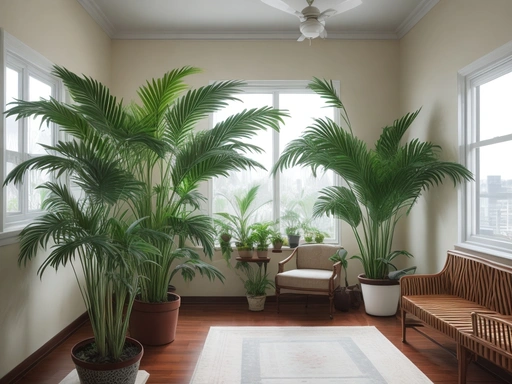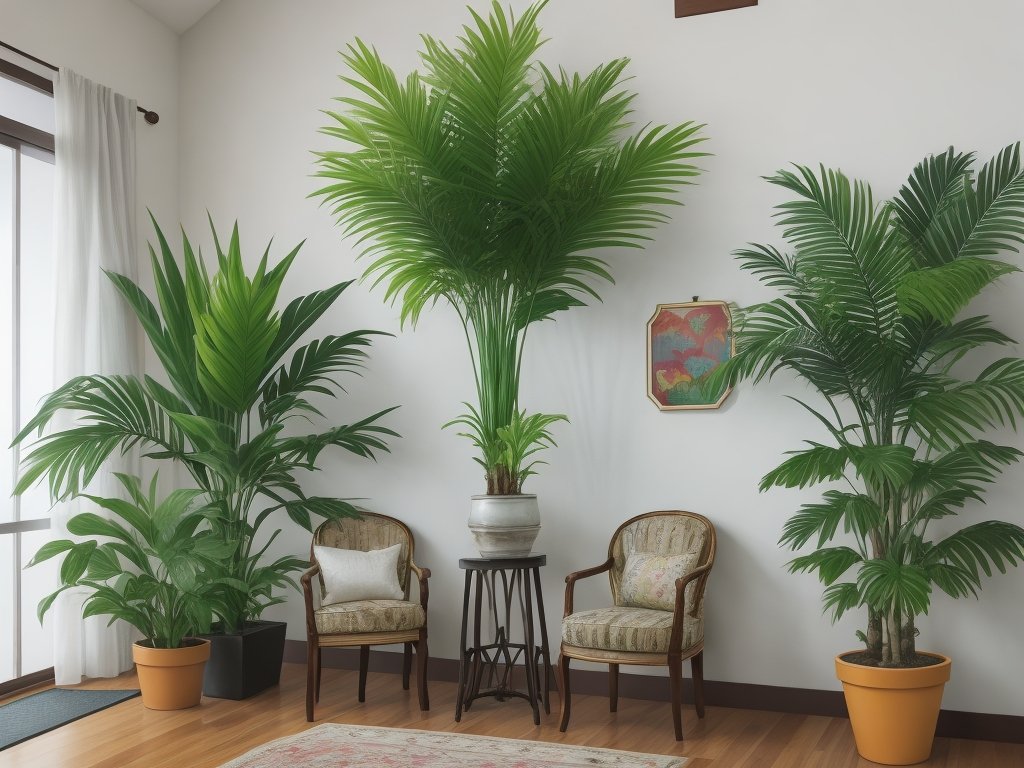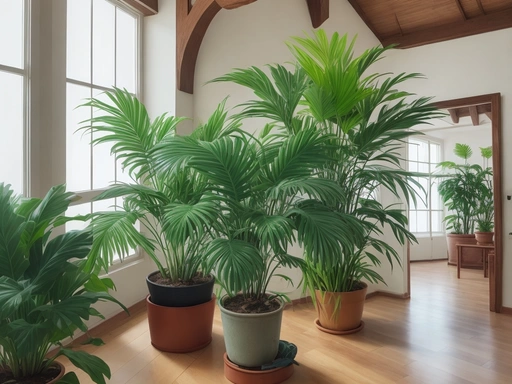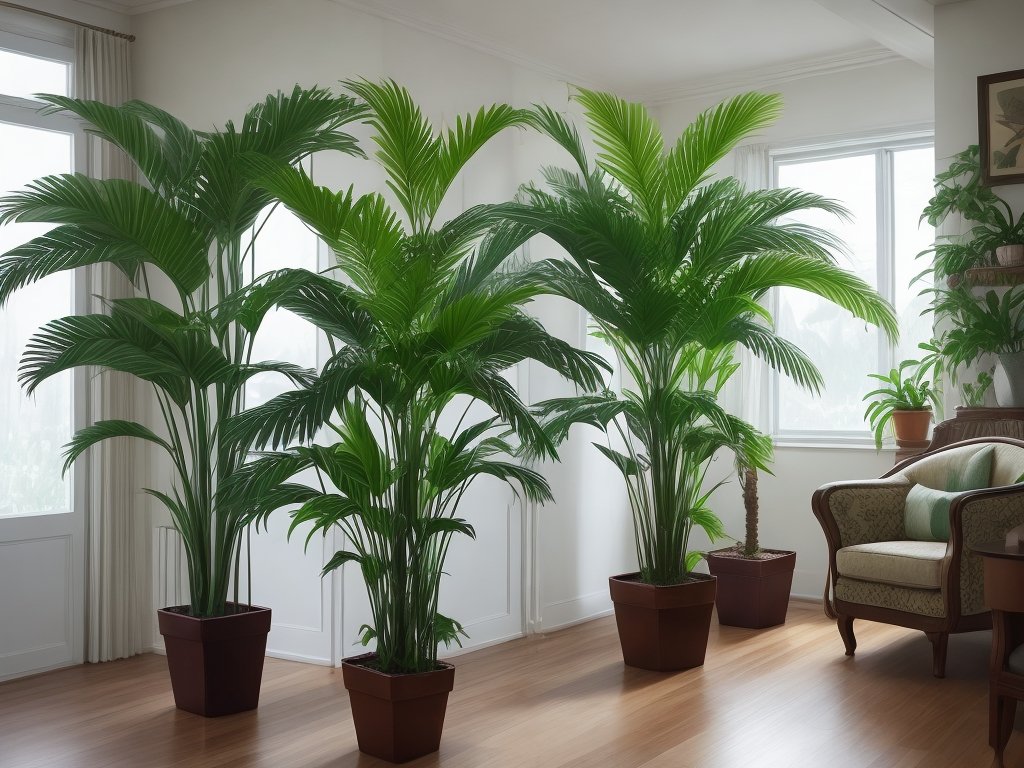Indoor Humidity And Parlor Palm: Finding Balance for a Healthy Home
Key Takeaways:
- Parlor palms thrive in moderate to high indoor humidity levels.
- Maintaining indoor humidity levels between 40% to 60% is beneficial for the health of parlor palms.
- Low humidity levels can lead to dryness and wilting of parlor palm leaves.
- Regular misting or using a humidifier can help maintain optimal humidity levels for parlor palms.
Are you struggling to maintain a healthy indoor environment for your Parlor palm? Well, look no further! In this article, I will delve into the fascinating world of indoor humidity and its impact on the growth of Parlor palms.
We’ll explore the benefits of having these gorgeous plants in your space, the optimal humidity levels they thrive in, and how to maintain the perfect balance.
Whether you’re a beginner or a seasoned plant parent, this guide will provide you with all the essential tips and tricks you need to keep your Parlor palm happy and thriving.
Understanding Indoor Humidity
Indoor humidity refers to the level of moisture present in the air inside your home. It can have a significant impact on your comfort and overall well-being.
What is Indoor Humidity?
Indoor humidity refers to the amount of moisture or water vapor present in the air inside a building or enclosed space. It is determined by the balance between the moisture added to the air (such as through activities like cooking, showering or using humidifiers) and the moisture that is removed (such as through ventilation or dehumidifiers).
Humidity levels are expressed as a percentage, with higher percentages indicating more moisture in the air.
Maintaining proper indoor humidity is important for the health and comfort of both humans and plants.

Why is Indoor Humidity Important?
Indoor humidity is important because it directly affects our comfort, health, and the well-being of our indoor plants. Maintaining optimal humidity levels helps prevent dry skin, respiratory issues, and allergies.
It also ensures that indoor plants, like the Parlor Palm, thrive and grow properly.
Proper indoor humidity is essential for a healthy and pleasant indoor environment.
Parlor Palm: An Ideal Plant for Indoor Spaces
The Parlor Palm is perfect for indoor spaces due to its adaptability and low maintenance requirements.
Benefits of Having Parlor Palm Indoors
Having a Parlor Palm indoors has several benefits. Firstly, it acts as a natural air purifier, filtering out toxins and improving indoor air quality.
Secondly, it adds a touch of greenery to your space, enhancing the aesthetic appeal.
Lastly, it has a calming effect and can help reduce stress and anxiety.

How Indoor Humidity Impacts Parlor Palm Growth
The indoor humidity levels have a direct impact on the growth of parlor palms in your home.
Optimal Humidity Levels for Parlor Palm
The optimal humidity level for a Parlor Palm is between 50% and 60%.
This level mimics the plant’s natural tropical habitat, helping it thrive.
Too low humidity can lead to brown leaf tips, while high humidity can cause root rot and fungal infections.
Invest in a hygrometer to monitor and maintain the ideal humidity range.

Effects of Low Humidity on Parlor Palm
Low humidity can have detrimental effects on Parlor Palms. It can cause the leaves to turn brown, crispy, and develop brown tips.
The plant may also experience slow growth, wilting, and leaf drop.
To counteract low humidity, consider misting the plant, using a humidifier, or placing a water-filled tray near the plant.

Effects of High Humidity on Parlor Palm
High humidity can have negative effects on Parlor Palms. It can lead to fungal diseases, root rot, and insect infestations.
Leaves may turn yellow or wilt, and growth can become stunted.
To prevent these issues, ensure proper air circulation, avoid overwatering, and maintain humidity levels between 40-60%.
Maintaining Indoor Humidity for Healthy Parlor Palms
Maintaining the right indoor humidity is essential for keeping your Parlor Palms healthy. Let’s explore some tips to help you maintain the ideal humidity levels for your plants.
Tips for Increasing Humidity Levels
To increase humidity levels indoors, you can try these tips:
- Place a water-filled tray near your parlor palm.
- Use a humidifier to add moisture to the air.
- Cluster your plants together to create a microclimate of higher humidity.
- Mist your parlor palm with water regularly.
- Place a pebble tray beneath your plant’s pot and keep it filled with water.
- Use a plant humidifier or a DIY humidifying system.
- Keep the doors closed and limit the use of exhaust fans to retain moisture.
- Consider placing your parlor palm in a naturally humid room like the bathroom or kitchen.
Remember, maintaining the right humidity is important for your parlor palm’s health and growth.
Tips for Decreasing Humidity Levels
To decrease humidity levels indoors, you can follow these tips:
- Use dehumidifiers: These devices remove excess moisture from the air, helping to lower humidity levels in your home.
- Ventilate your home: Open windows and use fans to circulate air and promote airflow. This can help reduce humidity levels.
- Fix leaks and repair plumbing issues: Moisture from leaks and plumbing problems can contribute to high humidity. Fixing these issues can help decrease humidity levels.
- Use air conditioning: Running your air conditioner can help to reduce humidity by cooling and dehumidifying the air.
- Avoid activities that generate moisture: Cooking, showering, and drying clothes indoors can all add moisture to the air. Try to minimize these activities or use exhaust fans to remove excess moisture.
- Keep indoor plants in moderation: While plants can improve air quality, they also release moisture through transpiration. Limit the number of plants in your home to help decrease humidity levels.
Remember, maintaining and controlling indoor humidity not only benefits your Parlor Palm but also creates a more comfortable and healthier living environment for you.
Using Humidifiers and Dehumidifiers
Using humidifiers helps increase indoor humidity levels, benefiting Parlor Palms.
Place them near the plant and follow manufacturer instructions.
Dehumidifiers, on the other hand, help reduce excess moisture in the air.
Use them if humidity levels are too high, following recommended usage guidelines.
Signs of Improper Indoor Humidity on Parlor Palm
Signs of improper indoor humidity on your Parlor Palm can include yellowing or browning of leaves, dry and crispy foliage, and stunted growth.
Symptoms of Low Humidity Stress on Parlor Palm
When the humidity levels in your indoor space are too low, your Parlor Palm might show signs of stress. Look out for these symptoms:
- Brown and crispy leaf edges: Low humidity can cause the leaves to dry out, resulting in brown and crispy edges.
- Leaf drop: The plant may start shedding leaves more frequently than usual due to the lack of moisture in the air.
- Slow growth: Insufficient humidity can inhibit the growth of your Parlor Palm, causing it to grow at a slower pace.
- Dry soil: Low humidity often leads to faster evaporation of water from the soil, making it dry quickly.
If you notice any of these symptoms, it’s essential to increase the humidity levels around your Parlor Palm to promote healthy growth and prevent further stress.
Symptoms of High Humidity Stress on Parlor Palm
High humidity stress on a Parlor Palm can lead to several symptoms.
The most common signs include yellowing or browning of leaves, wilting or drooping foliage, mold or fungal growth, and an increase in pest infestations.
These symptoms indicate that the humidity level is too high for the plant’s well-being.
How to Rectify Humidity-Related Issues
To rectify humidity-related issues, you can take several steps based on whether the humidity is too low or too high. For low humidity:
- Group your Parlor Palms together to create a microclimate of higher humidity.
- Place a tray of water near your plants to increase localized humidity.
- Use a humidifier to add moisture to the air.
- Mist your Parlor Palm leaves regularly to provide some extra moisture.
For high humidity:
- Increase air circulation in the room by using fans or opening windows.
- Ensure proper ventilation in the area where the plants are located.
- Move your Parlor Palms to a less humid location if possible.
- Use a dehumidifier to remove excess moisture from the air.
Remember, different plants have different humidity preferences, so it’s important to monitor humidity levels and adjust accordingly.
Frequently Asked Questions about Indoor Humidity and Parlor Palm
What is the ideal humidity level for a Parlor Palm?
The ideal humidity level for a Parlor Palm is between 40% to 50%.
This tropical plant thrives in moderately humid environments, so it’s important to keep the humidity within this range to promote healthy growth and prevent issues like dryness or excessive moisture.
Regularly monitoring and maintaining the humidity levels will help your Parlor Palm flourish.
Can I mist my Parlor Palm to increase humidity?
Yes, misting your Parlor Palm can help increase indoor humidity.
The fine water droplets from misting can temporarily increase moisture levels around the plant.
However, misting alone may not be sufficient to maintain optimal humidity levels for the plant’s overall health.
How often should I water my Parlor Palm in different humidity levels?
The frequency of watering your Parlor Palm depends on the humidity levels in your indoor space.
In low humidity, water your plant every 7-10 days.
In moderate humidity, water every 10-14 days.
In high humidity, water every 14-21 days.
Adjust watering schedule accordingly.
Final Verdict
Indoor humidity plays a crucial role in the health and growth of Parlor palms. Understanding and maintaining optimal humidity levels is key to ensuring their well-being.
Low humidity can lead to dryness and wilting, while high humidity can cause rot and fungal issues.
By following simple tips and utilizing humidifiers or dehumidifiers, you can create a healthy environment for your Parlor palms to thrive. It is essential to monitor and address signs of improper humidity to prevent stress and promote the longevity of these beautiful indoor plants.







